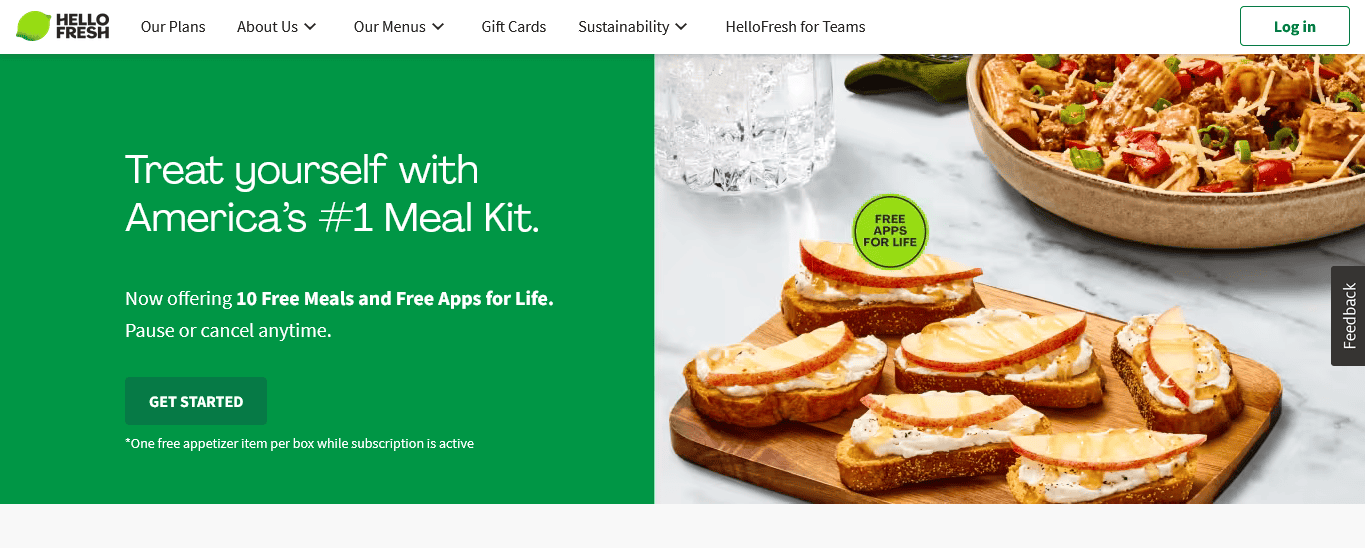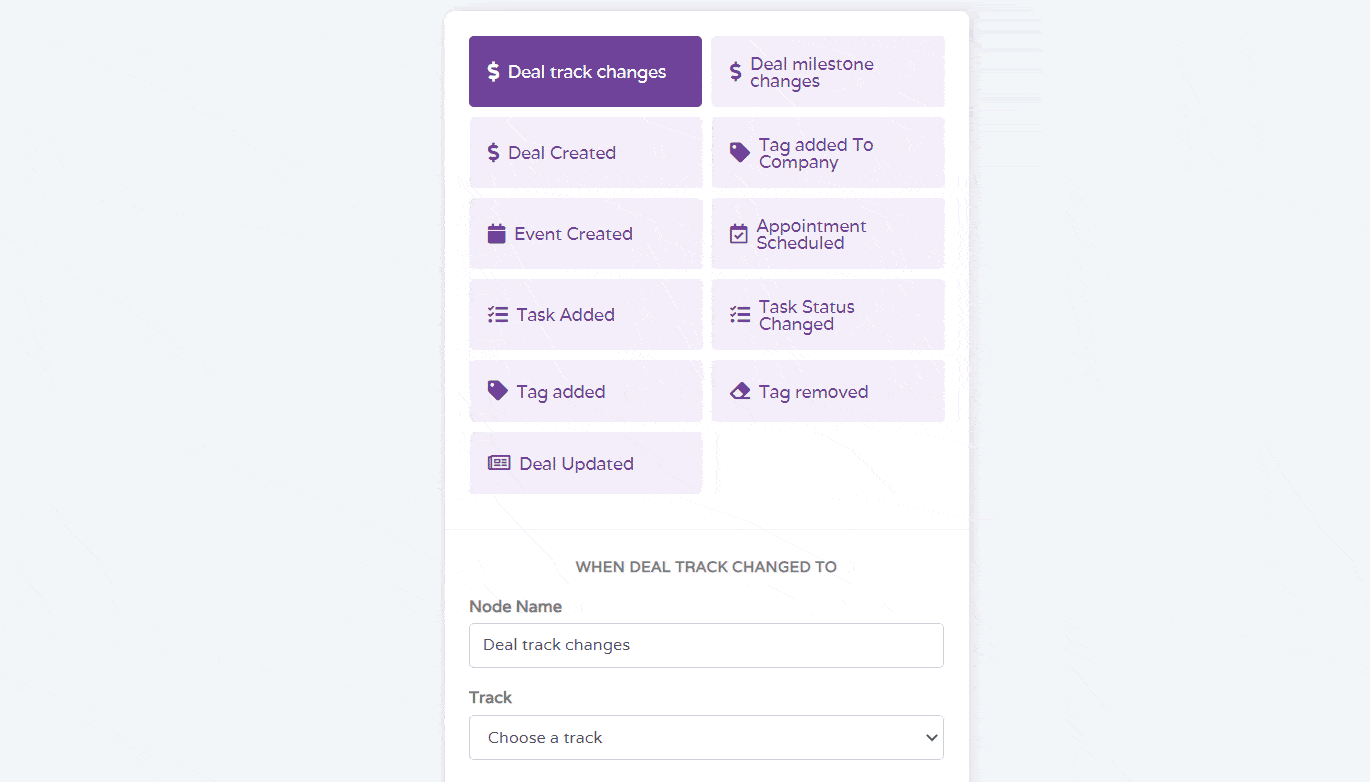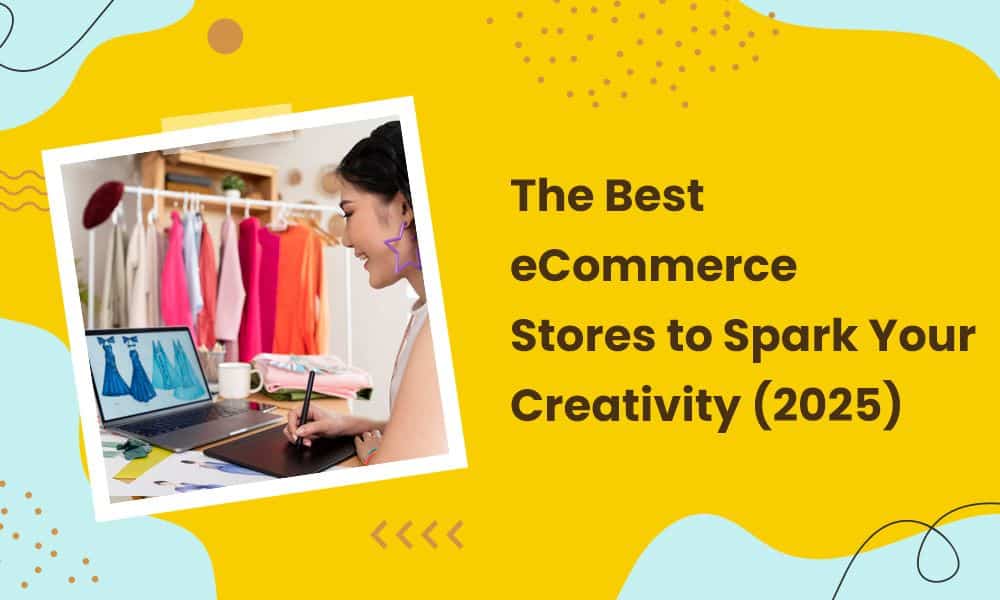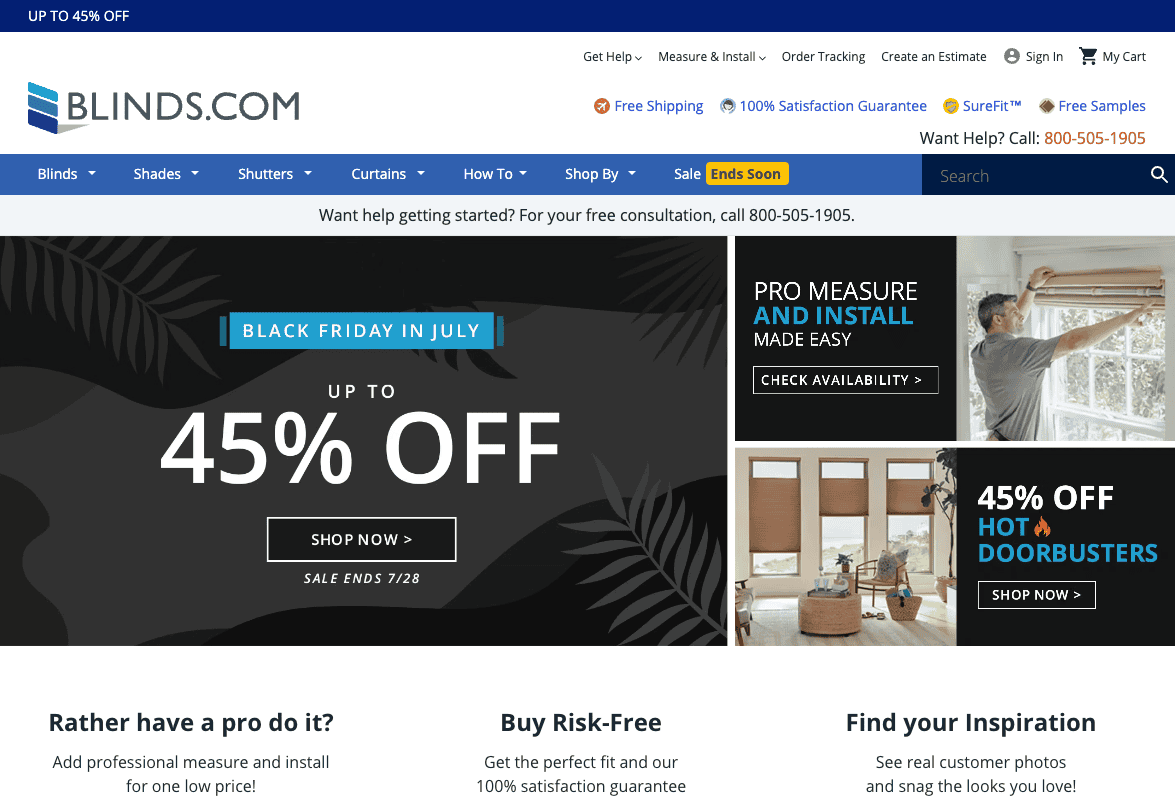eCommerce stores offer greater convenience than traditional stores. Over 2.71 billion people worldwide shop online from different digital devices.
This data shows that people today like online shopping more than ever. However, there are more than 26.5 million eCommerce websites worldwide, which makes eCommerce sellers ask, “What are the best eCommerce stores for online businesses?
The answer to the above question depends on several factors, such as the eCommerce business niche, target audience, budget, and products; however, the best eCommerce stores have three things they prioritize, which are:
- Product personalization
- Customer experience
- Technological infrastructure
eCommerce stores are adding new technologies like augmented reality to increase the engagement of customers and product visualization.
So, if you are looking for the best eCommerce stores to inspire you, you have come to the right place because in this blog post, we will discuss the following:
- The best eCommerce stores to inspire your own
- Features to look out for when deciding on an eCommerce platform for your online store
- Case studies of popular eCommerce stores on prominent eCommerce platforms
Ready? Let’s dive into it.
Table of Contents
Characteristics of the Best eCommerce Stores
Each eCommerce store has unique and advanced features that appeal to different eCommerce businesses.
However, before you launch your online store on any eCommerce platform, here are three things to look out for.
User-friendly design
A great eCommerce website design is user-friendly and has clear navigation. No customer wants to purchase from a store that is too complex to navigate or one that is disorganized.
For instance, imagine you want to buy a product from a website only to discover that the product pages are difficult to assess, the product categories are poorly labeled, and the product images are blurred or not correctly formatted.
In this case, chances are excellent that you’ll leave that site without completing the purchase.
Your potential and existing customers are the same. Your platform’s design should be organized and easy to navigate so customers can easily purchase.
Customers can follow through with purchases with a user-friendly design without abandoning their carts.
Like most eCommerce stores, you can boost engagement by adding features like wishlists, personalized recommendations, and filters. Another unique characteristic of user-friendly sites is the easy-to-search bar, which makes it easy for customers to discover and compare product prices.
Other user-friendly features include design templates and search engine optimization.
Advanced technology
For any online business to thrive, it must tap into the power of technology.
For example, a common concern for most online shoppers is security. So, the best eCommerce sites use advanced technology to secure their payment gateways, ensuring a safe, seamless shopping experience and protection from fraud. Other areas are product recommendation and marketing automation.
Many stores use advanced analytical tools to observe the behaviors of new and existing customers to improve product recommendations and customer experience.
Excellent customer support
An excellent customer support system is important and good for several reasons.
First, according to reports from Microsoft, 90% of American online shoppers use customer support as a deciding factor when making a purchase. That’s not all. HubSpot research shows that 93% of customers are likelier to shop with a brand following a good customer service experience.
Establishing excellent customer support is a great way to show your brand values and build trust.
Great brands use email, phone, live chat, or a combination depending on customer plan to provide customer support services. They also use live chat support to answer their customers’ real-time questions and provide self-service options, like FAQ resources, to help customers get the help they need.
Case Studies of Popular eCommerce Stores
Let’s look at some popular eCommerce stores that have done well on major platforms like Shopify, BigCommerce, and Magento eCommerce.
Kylie Cosmetics: Shopify
Tobias Lütke created and launched this great eCommerce site, Shopify, in 2006 because he was dissatisfied with the available eCommerce platform. Today, Shopify hosts more than 4.4 million eCommerce stores selling to customers worldwide.
A case study for Shopify is Kylie Cosmetics. In 2014, Kylie Cosmetics chose Shopify as its eCommerce platform because it needed an easy-to-use, scalable platform with a clean design for a global audience.
The success of Shopify and the business growth of Kylie Cosmetics can be traced to these factors:
- Ease of use: Shopify’s web design is easy to use, allowing customers to navigate the platform and make purchases easily
- Scalable: Shopify’s vast toolset allowed Kylie Cosmetics to add eCommerce tools that meet their specific needs even as they grew.
- Social proof: When customers shop from your store, they can leave a review about your product. This user-generated content is a great way to build credibility and attract new customers.
- Extensive app marketplace: Shopify boasts a robust app store with thousands of third-party integrations, which expands its commerce functionality. Shopify handles everything from web hosting to marketing automation, accounting, and shipping, allowing eCommerce businesses like Kylie customers to focus on the most important things.
- App-based customization: With little coding knowledge, business owners like Kylie Cosmetics can customize their store’s looks, ensuring they are beautifully designed. Shopify is also optimized for mobile viewing, allowing businesses to manage their site with the gadgets they have handy.
Blinds.com: BigCommerce
BigCommerce is a popular platform launched to make it easy for small businesses to sell online. Blinds.com is a leading online retailer for custom window treatments, and it is the best example of an eCommerce business that has scaled through by launching its store on BigCommerce.
The platform struggled with scalability during peak sessions and customization options. BigCommerce helped Blinds.com with SEO features, Open API, and tools for customized storefront design.
BigCommerce currently has a generated revenue of 340.1 million USD, and these are the unique key factors contributing to the success of Blinds.com and the growth of BigCommerce.
- Developer-friendly platform: BigCommerce gives developers control over the store’s code and functionality. Developers can add what they want and expand the platform’s capabilities. This is especially important for businesses with complex product catalogs or unique needs.
- Built-in scalability: BigCommerce invests in high-performing infrastructure, such as the Content Delivery Network (CDN) and Automatic scaling, to ensure businesses can handle high store traffic and deliver products without buying plugins.
- Lower transaction fees: When sales are processed through third-party payment parts, BigCommerce does not charge as much as other platforms would.
Ford: Magento eCommerce
Magento, a leading open-source eCommerce platform, was initially launched in 2008 and acquired by Adobe in 2018.
It offers both free and paid plans and added top eCommerce marketing features like custom reporting and order and catalog management. More than 267,000 Magento-based eCommerce websites exist globally, and Ford Motor Company is a perfect example.
Ford needed a robust and scalable platform to launch its all-electric Mustang Mach-E online. The platform needed to integrate seamlessly with Ford’s existing systems, handle high customer traffic volumes, and deliver an excellent brand experience.
Ford’s success and the growth of Magento can be linked to these factors:
- Open-source flexibility: Magento’s open-source allows for extensive customization and scalability, catering to businesses of all sizes’ unique needs, from startups to large enterprises.
- Extensive features: The platform provides businesses with content management, sales, and marketing features.
- Large developer community: A vast and active developer community fuels continuous innovation for the Magento platform, resulting in a constant stream of extensions and plugins that address various needs and functionalities.
- Scalability: Magento can handle high-traffic volumes and complex product catalogs, making it suitable for businesses with anticipated growth.
- Security: Magento prioritizes secure transactions and customer data protection, fostering trust and confidence among businesses and their customers.
Read also: 6 High-Impact eCommerce Marketing Strategies to Try Now
Niche Markets and Specialized eCommerce Stores
Niche marketing is a specialized form of marketing toward a well-defined and segmented audience. Specialized eCommerce stores are stores targeting a specific audience. The standard model these niche markets can take includes:
- Subscription-based models
- Sustainability-focused stores
Subscription-based model
In the subscription-based business model, customers pay a recurring amount for services or products at stipulated intervals. This model gives the business and the customer what they want: profit and value, respectively.
A subscription-based model allows you to provide convenience, retain customers, and earn a steady income.
Let’s look at some of the companies that make use of the subscription-based model:
Dollar Shave Club
Michael Dubin and Mark Levine co-founded the Dollar Shave Club (DSC).
They aimed to provide high-quality razors at affordable prices through the subscription model. Though top businesses like Gazille existed in the shaving industry then, they operated with the traditional retail distribution model. DSC wanted to make a change, and they did.
One year after officially launching, DSC attracted tens of thousands of subscribers who received high-quality razors at agreed-upon intervals.
By 2015, they had a subscription base of up to 1.5 million people. Their customers loved the model.
Hello Fresh

Their model of operation involved customers subscribing for a weekly or monthly plan to receive an agreed number of meal kits on their doorstep.
This business has grown to pioneer the meal kit industry using the subscription model. As of 2023, its active subscription base was 8 million, and its annual revenue was over 3 billion US dollars.
Read also: Top 7 Shopify Alternatives to Grow Your Online Business
How do subscription-based niche markets cater to specific consumer needs and preferences?
Dollar Shape Club and Hello Fresh focused on solving a pain point for a specific segment of people, which helped shape the nature of their services and products.
Dollar Shape Club focuses on men’s grooming, a personal care and beauty market subsegment. On the other hand, Hello Fresh focused on meal kit delivery, a subset of the food delivery sector.
The subscription model enabled these businesses to cater to the specific needs of their market sub-segment by:
- Convenience: Dollar Shape Club discovered that their target audience found it inconvenient to go to a store only to buy replacement razors. The subscription model with home delivery as one of its core elements was the best model to solve this pain point.
- Offering higher value: Subscription boxes are usually packed to provide more value to the customer. In addition to delivering the products to your doorstep, they may contain free or subsidized products. Hello, Fresh’s subscription box includes a complimentary appetizer kit. This way, customers get more value for their money.
Sustainability-focused stores
Sustainability-focused stores are stores focused on meeting the needs of this group of customers. Some successful businesses that fall into this category include:
Patagonia
Yvon Chouinard founded Patagonia as a retailer of outdoor recreation clothes. Though this business already falls under a subset of a larger market, its founder is eco-conscious.
Therefore, the business was built on a vision to provide value to its customers without harming the environment. To this end, Patagonia focused on customers who like and are willing to pay for eco-friendly outdoor products.
The industry is currently estimated to be worth 3 billion US dollars.
Thousand Fell
The increase in eco-conscious customers has brought about an increase in the demand for eco-friendly home goods. Thousand Fell is a business that caters to this demand without compromising quality.
Chloe Songer founded it with the vision of creating modern, sustainable textiles.
How do sustainability-focused niche markets cater to specific consumer needs and preferences?
- Transparency and authenticity: The eco-friendly customer base desires to protect the environment. Thousand Fell, beyond using natural and recyclable materials, caters to the specific needs of its customers by being open and sincere about its processes. It uses digital channels to show its customers its production materials and methods.
- High-quality products: While the audience base of these niche markets cares about the environment, they do not sacrifice quality for it. They desire to have them both. The successful niche markets in this model can offer both quality and sustainability to the customers.
Read also: 6 High-Impact eCommerce Marketing Strategies to Try Now
Innovative Trends in eCommerce
As technology advances, eCommerce activities evolve. To run a successful eCommerce store, you must know what’s trending and the features involved.
We will discuss the top three eCommerce trends and how leading eCommerce stores implement them.
Omnichannel marketing
73% of retail customers shop across multiple channels. These channels may include the eCommerce store, social media marketing, email marketing, and even the traditional brick-and-mortar store.
Omnichannel marketing is a business strategy that blends these multiple channels to create a consistent customer experience. This allows buyers to continue their buying journey in any channel they find themselves in.
How top eCommerce stores leverage omnichannel marketing
Sephora, a famous beauty retail store, attributes its success to omnichannel marketing. Using a mobile app, they effectively infused their physical stores with their digital outlet.
The app can identify when customers enter their physical store using location-based configurations. It then sends relevant information from the store map to help the customer make a personalized buying decision.
Sephora continues to interact with customers even after they buy a product. They do this by offering valuable content on their social media channels, which helps them stay at the top of their customers’ minds.
You can still implement the omnichannel marketing trend without an app. Sephora’s main business is merging its existing channels to meet its customers’ needs, and there are several ways to implement this into your business.
For instance, leading stores like Nike and Sephora focus on creating a consistent value-driven experience across their existing customer channels.
AI Integration
AI algorithms sift through customer data records.
They analyze multiple data records to predict what customers will likely respond to, making it easy for businesses to personalize customer interactions.
AI can also go beyond human limits to send out automated responses and offer 24/7 support to customers through chatbots and autoresponders. With AI, your business operation will improve, and you can make decisions based on existing data.
How top eCommerce stores leverage AI integration
Ulta Beauty is a cosmetic retail store that offers personalized services to its customers using a generative AI tool.
The tool uses image recognition, machine learning, and already-programmed data to recommend personalized products and routines. It can be used at home or in the store under the guidance of a store advisor.
Netflix’s AI integration, on the other hand, is less complex than Ulta Beauty’s, yet it is very effective. Netflix uses an AI recommendation engine to generate hyper-personalized movie recommendations.
Netflix’s AI can figure out what customers like by carefully observing their behaviors and profiles on the website. It can filter over 3000 movie titles using 1,300 recommendation clusters to pinpoint the exact titles a user might be interested in.
Personalized shopping experience
Customers have come to prefer services that address their preferences and pain points. These could include personalized web content, product recommendations, and customer service.
How top eCommerce stores leverage personalized shopping experiences
Spotify, a top music discovery brand, has recorded much success since its launch in 2008. Their success is attributed to the customized experience they create for their users.
A common personalization strategy for them involved sending out daily customized music recommendations.
However, they don’t stop there. Spotify merges localization and personalization to create a memorable experience for its users.
They create playlists for different regional languages and separate social media channels for their primary market to achieve localization. This enables them to streamline their messaging and services to suit a specific group of people in their diverse audience.
Read also: 19 eCommerce Best Practices to Win Customer Confidence
Technology and Tools for eCommerce Excellence
Analyzing various successful eCommerce stores reveals one thing: running an eCommerce store requires more than just creating a website and listing your products. You need some tools to ensure the efficient running of your store.
Here are some of the eCommerce marketing tools you should have for your online store success:
Inventory management systems (IMS)
Inventory management systems help you maintain an accurate stock level. They minimize cases where you suddenly run out of stock or oversell.
Fish Bowl and Zoho inventory are popular inventory management systems. They offer real-time inventory tracking, automated order fulfillment, and periodic reports, which help users make informed decisions, take better action, and improve efficiency.
Order management systems (OMS)
Order Management Systems focuses on the customers’ experience when they place an order. They are responsible for processing orders from different channels and automating order fulfillment.
This system can be merged with the Inventory management system. However, you need to understand their separate functions as it will help you decide which is more compatible with you. For real-time ordering tracking, you can consider tools like Orderhive.
Marketing automation
Marketing automation tools like EngageBay and ActiveCampaign help you streamline and personalize your marketing outreaches. They do this by allowing customer segmentation and sending out automated marketing messages.
Customers can be grouped into segments using behavior and purchase history data. Marketing messages tailored to their needs are sent at the right time.

Customer relationship management (CRM)
The CRM enables businesses to manage interactions with customers across their digital channels. HubSpot and Zoho are good CRM tools.
They provide a centralized platform for tracking customer data, communication, and purchase history analysis. A good CRM platform assures brand loyalty and good customer relationships.
Security
As a store owner, you owe your customers the responsibility of safeguarding the data they entrust. To protect this data, you must ensure that the tool you use as a payment gateway adheres to the Payment Card Industry Data Security Standard (PCI DSS).
There are also security tools like Cloudflare or Sucuri. These tools use Secure Socket Layer (SSL) encryption and other technology to offer customer data security solutions.
Benefits of using these eCommerce technology and tools
Let’s look at some of the benefits of using eCommerce technology and tools.
Enhanced efficiency
Advanced tools allow eCommerce store owners to make informed decisions and improve marketing strategies. This, in turn, increases the operational efficiency and positively affects the conversion rates of their marketing efforts.
Increased productivity
By using automation technology, you will not have to worry about repetitive tasks. This reduces the number of employees involved in personal tasks and allows you to focus on more important tasks.
High-end customer experience
Advanced tools create an experience that fosters brand loyalty through highly personalized messaging, prompt customer services through chatbots, and ease of order fulfillment.
Reduced cost and competitive edge
Advanced technology reduces the possibility of human error, saving businesses costs in the long run. It also gives you an edge against other competitors in the eCommerce space. With better tools, businesses can better serve their customers.
The Importance of Mobile Optimization and Accessibility for eCommerce Stores
Mobile optimization involves making your eCommerce store accessible on any mobile device.
A mobile-responsive design adjusts the functionality and features of your store to fit any mobile device. Here are some of the advantages of mobile optimization.
Good customer experience
Mobile responsive websites create a positive experience for customers by allowing them to navigate the website with the device of their choice without hitches.
This encourages customers to spend more time on the website, fostering loyalty to your business objectives and increasing their chances of returning.
Increased conversion rates
A mobile responsive website increases the possibility of consumers making a purchase.
Since customers spend more time on the website, persuasive elements like testimonials and product photos get the chance to nudge them toward making a purchase.
Improved ranking on search engines
Aside from identifying keywords in content, search engines consider the duration of time people spend on a website to rank the website.
Also, search engines like Google prioritize mobile-friendly websites, giving them more visibility and attracting more organic traffic.
With 91% of customers shopping online with mobile devices, eCommerce stores that are not mobile optimized risk losing potential customers. Mobile optimization also involves the user’s time and context, providing fast loading speeds that are responsive and intuitive and meet the expectations of today’s users to make sales.
Benefits of SEO
Usually, accessibility practices include alt text for images, descriptive link text, etc. These practices align with SEO, which improves a website’s organic search engine ranking.
Read also: eCommerce Marketing — 8 Fantastic Strategies For Success
Challenges and Solutions for eCommerce Stores
The eCommerce landscape is promising yet challenging, and success is only achieved when challenges are solved.
Here are some of the challenges that most eCommerce encounter.
Market saturation
The number of online eCommerce stores is overwhelming, and customers are continually bombarded with marketing messages. This raises the concern of how to stand out from all the marketing ‘noise.’
To address this challenge, you need to identify the specific group of people your product was made for.
Understanding your customer segment takes the bulk work off your shoulders because it streamlines your marketing efforts and makes your communication poke directly at customers’ needs and desires.
You also need to be visible enough for your audience to identify you. eCommerce stores get to do this by building a solid brand identity.
While crafting your brand identity, keeping your target audience in focus is essential.
Find the intersection between your business’s values and your target audience’s preferences. If they are your business’s specific audience, you will find a point where these two crucial factors meet.
Data and cybersecurity
The possibility of a cyberattack is a recurring concern in the eCommerce space.
Every customer who visits your store needs to fill in their details, and they trust you to keep them safe. When you fail to keep the information, and it is exposed, you’ll be prone to cyberattacks and other dangers that can damage your business’s reputation.
A practical solution is to invest in measures to protect your stores from being hacked.
These measures include selecting a secure payment gateway and using encryptions and plugins. You should also properly communicate how you collect, use, and protect your customers’ data in your privacy policy, which will reassure weary customers.
Increased customer loyalty and retention
Retaining an existing customer usually costs less and yields more profit than acquiring a new one.
This is why most businesses focus more on developing a loyal customer base. Meeting and exceeding customer expectations is one fundamental way of nurturing customer loyalty. With technological advancements and exposure to other brands, customers come into your eCommerce store with high expectations.
Using technologies like Chatbots, automated messaging, and AI, you can help customers interact with your store frictionlessly and less personalizedly.
Handling logistics
eCommerce store owners face two everyday logistics challenges: the supply chain issue and shipping costs.
Logistics often incur extra expenses for the business due to errors. This can also delay the delivery of products. Integrating supply chain management software into your eCommerce store is the most effective solution. It helps you manage and observe specific parts of your supply chain.
You can also use fulfillment apps to manage shipping processes and reduce costs.
Read also: How To Automate Your eCommerce Business
Wrap Up
We have looked at the main features of every successful eCommerce store: a friendly design for customers, easy navigation, advanced technology, reliable customer support, and good mobile device optimization.
The marketplace might be daunting, but you can navigate it with the right marketing tools and strategies and by launching your online store on the eCommerce platform that suits your needs.
Do not forget to invest in SEO, take advantage of digital technology, and pay attention to content creation and digital marketing for increased visibility.
By offering a smooth and secure shopping experience that prioritizes value and customer satisfaction, you can build a solid online presence, carve out your niche, and thrive in eCommerce.
EngageBay is an all-in-one marketing, sales, and customer support software for small businesses, startups, and solopreneurs. You get email marketing, marketing automation, landing page and email templates, segmentation and personalization, sales pipelines, live chat, and more.
Sign up for free with EngageBay or book a demo with our experts.
Frequently Asked Questions (FAQ)
1. What makes an eCommerce store successful?
A successful eCommerce store offers multiple payment options, an effective content strategy, high-quality product photos, and a user-friendly and intuitive interface to ensure a personalized buying experience and customer satisfaction.
Effective SEO practices ensure that your store can be easily discovered online.
2. How important is mobile optimization for online stores?
Mobile optimization is essential for online stores because most people now shop online using smartphones.
Mobile-optimized stores have fast loading speeds, better user experiences, and reduced bounce rates. Mobile optimization can also improve your store’s ranking, as search engines prioritize mobile-optimized sites.
3. What are the emerging trends in eCommerce for the next year?
Augmented reality (AR) allows customers to visualize products in their own space. eCommerce stores can personalize communication and interaction through AI and machine learning to enhance customer experiences.
Sustainable and eco-friendly products are gaining popularity as consumer awareness increases.
4. How can small businesses compete with large eCommerce stores?
Small businesses can compete by offering unique, niche-focused products that larger stores may find hard to provide.
Small companies can boost their presence and attract customers online by utilizing social media presence and content marketing strategies. Leveraging SEO and targeting smaller regional markets can help small enterprises gain organic visibility.
5. What tools are essential for running an effective eCommerce platform?
SEO tools like SEMrush and Ahrefs help to improve online organic visibility and search engine rankings.
With Google Analytics, tracking sales performance and customer behavior is easy. You can integrate email marketing tools like MailChimp and Zendesk into your platform for good customer support and streamlined communication.






